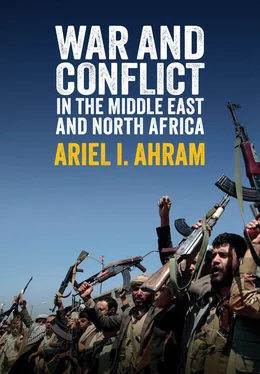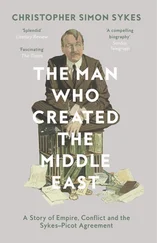[W]e know relatively little about how states and societies in the Middle East have been shaped and reshaped by their intensive and prolonged exposure to and participation in war making and war preparation, often conducted by regimes that have embraced militarization as an everyday tool of governance as much as (if not more than) a means to ensure national security. 20
A number of specialized and country-specific studies have answered this call. 21Still, most generalized accounts of the region neglect war’s role as a catalyst of social change.
A third reason to study conflict and war in MENA is normative. Social science cannot be morally disinterested; it is at its best when it aims to improve the condition of the world. 22The scale of human suffering in MENA demands at least the effort to understand what perpetuates and intensifies these conflicts. Western powers often view MENA as vital to their strategic and economic interests. These powers have had a considerable impact on the war and conflict in MENA, sometimes for peace, sometimes for further war. Citizens of the United States, European countries, or other Western powers have specific responsibilities to examine the policies of their governments.
Still, the book does not offer policy prescriptions or lay blame on any specific actor. It is not inherently pacifist in nature. Yet it attempts to explain outcomes in a way that shows what might – and might not – be possible to avert or mitigate future war.
This book is intended for students of security studies and Middle East area studies. It explores key thematic issues of war and conflict in MENA using a number of comparative strategies. It is not a comprehensive military history of the region. Certain conflicts get more attention than others. The conflict in Western Sahara, for instance, is mentioned only a few times. The choice to focus on particular episodes of conflict and war is intended to illustrate themes and concepts using historical references that are likely to be familiar to most readers. They are not intended to downplay the importance of any particular conflict. For sourcing, the book largely relies on secondary materials published in English. This is deliberate, in the hopes of encouraging students to use the notes and bibliography for further research. In addition to this narrative element, at numerous points in the book there are graphs and tables that present longitudinal or cross-case comparative information. Again, this is deliberate, intended to demonstrate the value of examining cases of war and violence both intra-regionally within MENA and as part of larger worldwide trends.
Part Iof the book sketches the context of conflict and war in the region, testing out the proposition that MENA is exceptionally prone to war. Chapter 1analyzes different attempts to count and measure the frequency, type, and magnitude of wars in MENA over the last century. It highlights the way MENA diverges from certain global trends and follows others. It highlights the diverse forms of conflict within the region. Chapter 2provides a conceptual and historical sketch of how the progress of state formation interacted with warfighting. It describes how states and their rivals organized violence differently at different times during the last century. These differences in organization in turn had different ramifications for human security.
Part IIexamines the elements of the conflict traps that affect MENA. These are not intended as an exhaustive list of war triggers or immediate causes of specific conflicts. Rather, they explore the general conditions that singularly or in combination make war a recurrent and important feature in MENA’s regional affairs. Chapter 3examines the role of oil in war. It shows that states fighting to control oil markets is relatively rare. However, oil contributes to war and violence largely by affecting the ways states manage and respond to internal opposition and challengers. Chapter 4examines the role of ethnicity or “ancient hatreds” in regional wars. Finding a common sense of national identity is a crucial component of state-building. But instilling and reproducing this identity often spurs violent resistance. Chapter 5examines the role of geopolitics and outside intervention in conflict. It shows how outside powers have always played a major role in regional politics, but their ability to spur or restrain conflict has been equivocal. One of the most important elements of geopolitics is not the direct commission of war, but enabling states (and non-state actors) to conduct war on a larger scale.
Chapter 6offers an extended case study of the last decade of MENA history as a protracted and multi-level regional war. It shows how the civil wars in Libya, Syria, Iraq, and Yemen, often treated as discrete conflicts, became interconnected as theaters in a larger regional and global contest. This contest involved the United States and Russia as the main extra-regional players, but most crucially Iran, Saudi Arabia, Turkey, the UAE, and others as regional actors asserting supremacy. Operating transnationally, the conflict traps escalate war to the point where initial objectives and interests no longer matter.
The seventh and final chapter of the book shifts the focus to peace and peacemaking. There have been innumerable diplomatic plans and efforts to end wars in MENA. Only a fraction have made much impact. Many of these initiatives came from extra-regional powers or their close regional allies. At the same time, “bottom-up” efforts to achieve local conciliation and peace also have a mixed record. This chapter evaluates how different approaches to conflict resolution and mitigation address the potential “traps” of oil, identity, and geopolitics. In many cases, “solving” one trap only exacerbates the problems of the other, creating a Gordian knot that cannot easily be untied. Nevertheless, attention to those places where peace has gained a footing is important for understanding how conflicts in MENA might end.
1 1. Joshua S. Goldstein, Winning the War on War: The Decline of Armed Conflict Worldwide (New York: Penguin, 2012); Nils Petter Gleditsch et al., “The Forum: The Decline of War,” International Studies Review 15, no. 3 (2013): 396–419.
2 2. Stockholm International Peace Research Institute, SIPRI Yearbook 2017 (New York: Oxford University Press, 2017), 3.
3 3. Robert Malley, “The Unwanted Wars: Why the Middle East Is More Combustible Than Ever,” Foreign Affairs, November 1, 2019.
4 4. Miguel A. Centeno and Elaine Enriquez, War and Society (Cambridge: Polity, 2016), 175. See also Wim A. Smit, “Military Technologies and Politics,” in The Oxford Handbook of Contextual Political Analysis, edited by Charles Tilly and Robert E. Goodin (New York: Oxford University Press, 2009).
5 5. Paul Collier, Breaking the Conflict Trap: Civil War and Development Policy (Washington, DC: World Bank Publications, 2003), 13.
6 6. Charles Tilly, Coercion, Capital, and European States, AD 990–1990 (Cambridge, Mass.: Basil Blackwell, 1990); Joel S. Migdal, Strong Societies and Weak States: State–Society Relations and State Capabilities in the Third World (Princeton, NJ: Princeton University Press, 1988); Kalevi J. Holsti, “War, Peace, and the State of the State,” International Political Science Review 16, no. 4 (1995): 319–39; Dan Slater, “Violent Origins of Authoritarian Variation: Rebellion Type and Regime Type in Cold War Southeast Asia,” Government and Opposition 55, no. 1 (2020): 21–40.
7 7. Alexander Bellamy, World Peace (and How We Can Achieve It) (New York: Oxford University Press, 2019), 126.
8 8. Michael Mann, The Sources of Social Power, Volume 1: A History of Power from the Beginning to AD 1760 (New York: Cambridge University Press, 1986), 11.
Читать дальше












